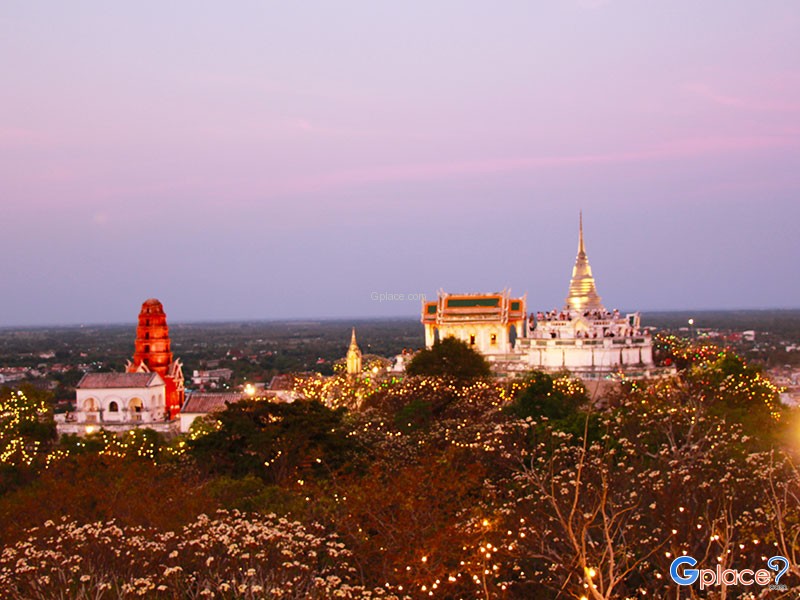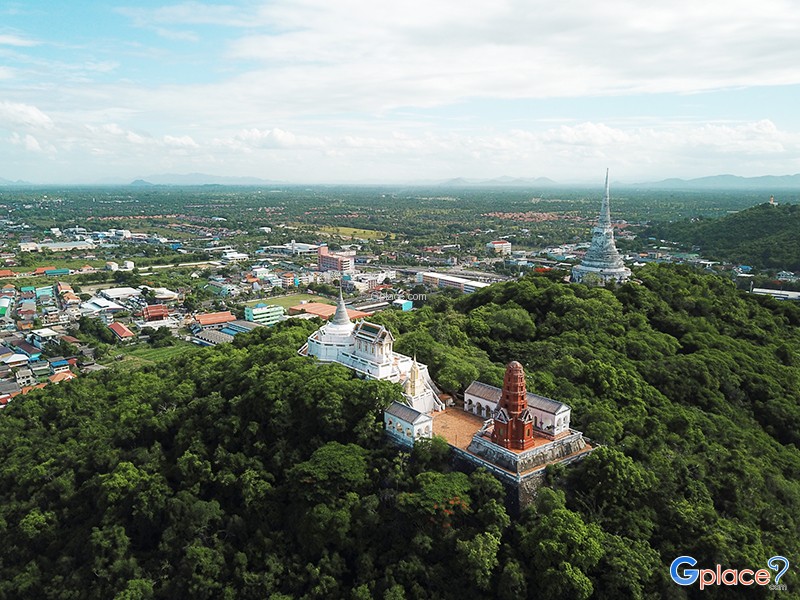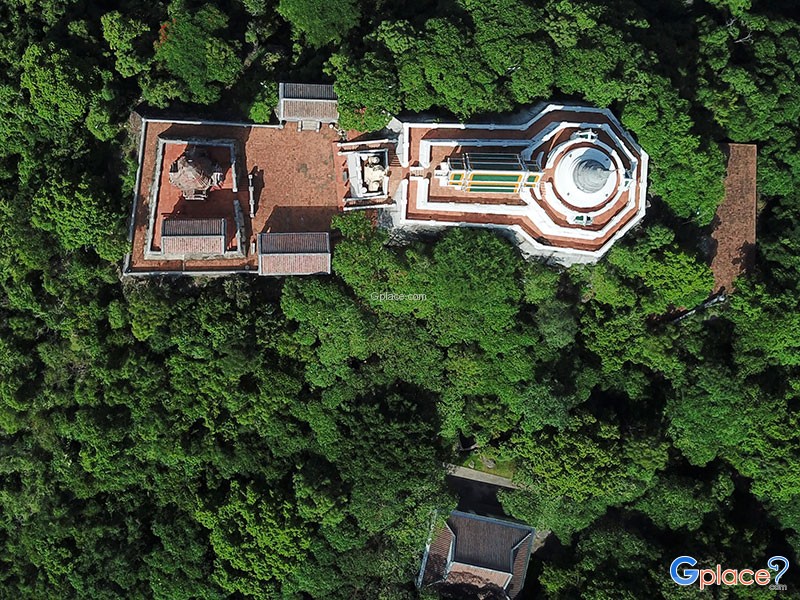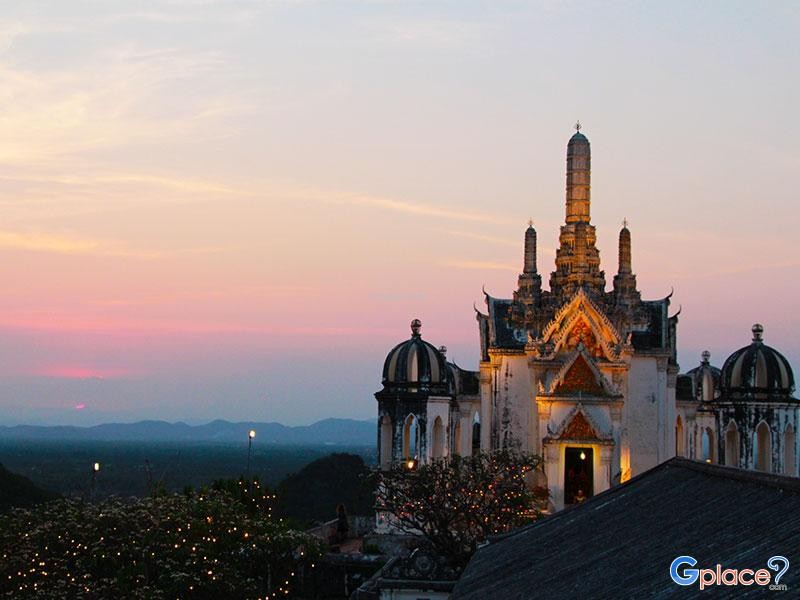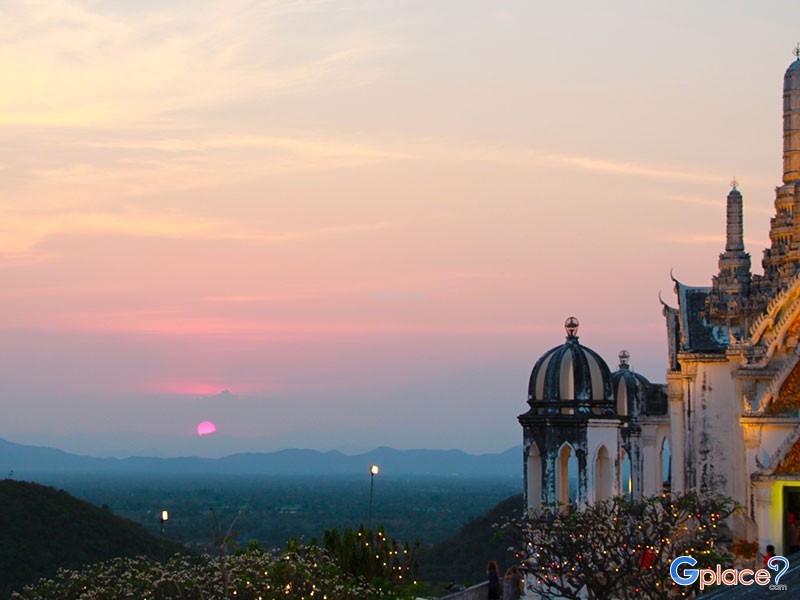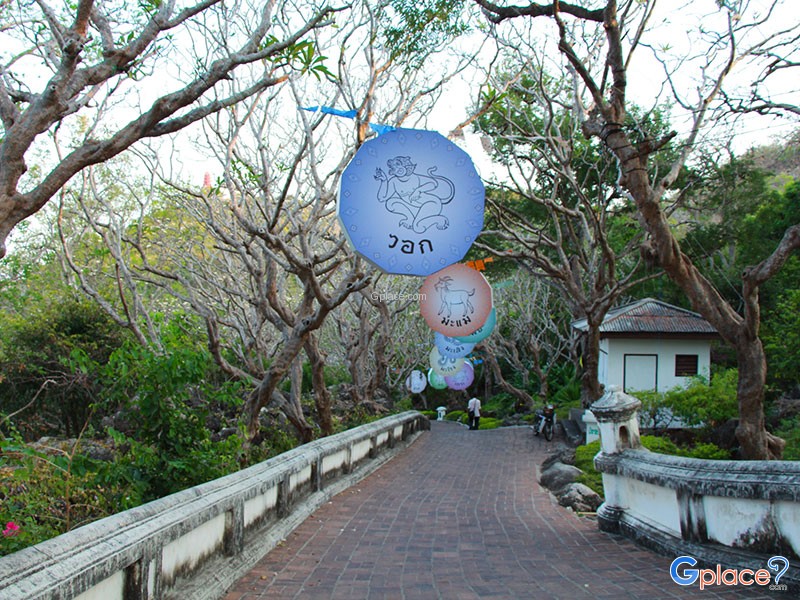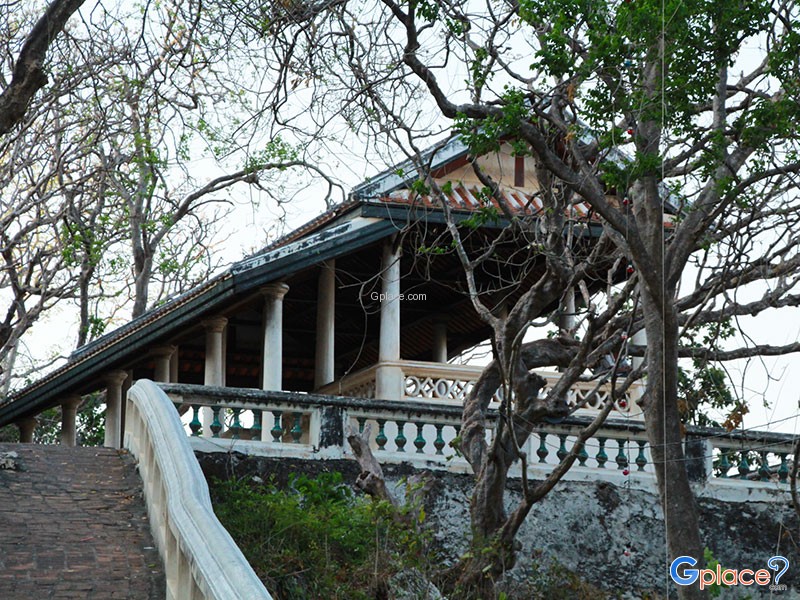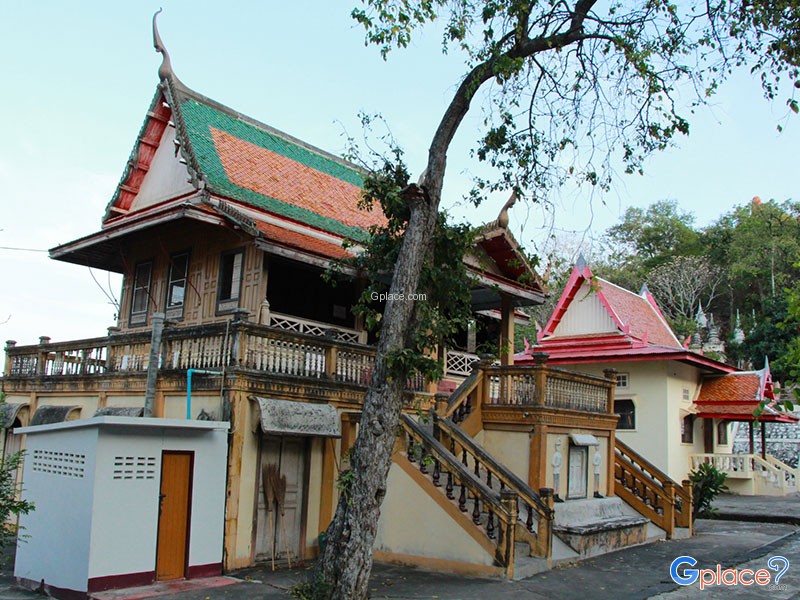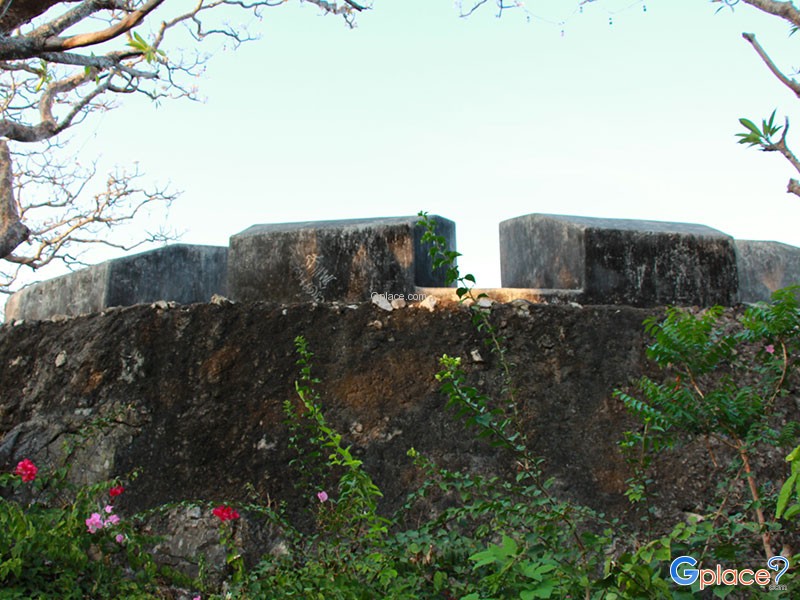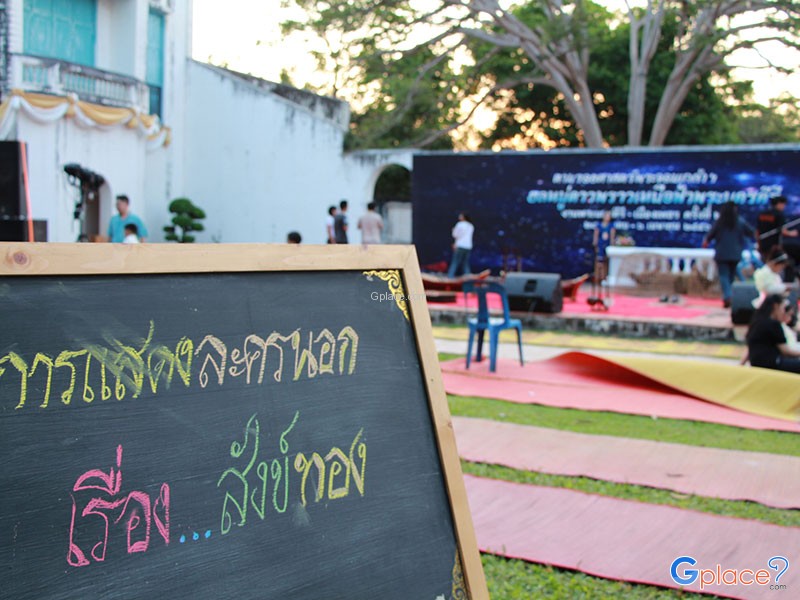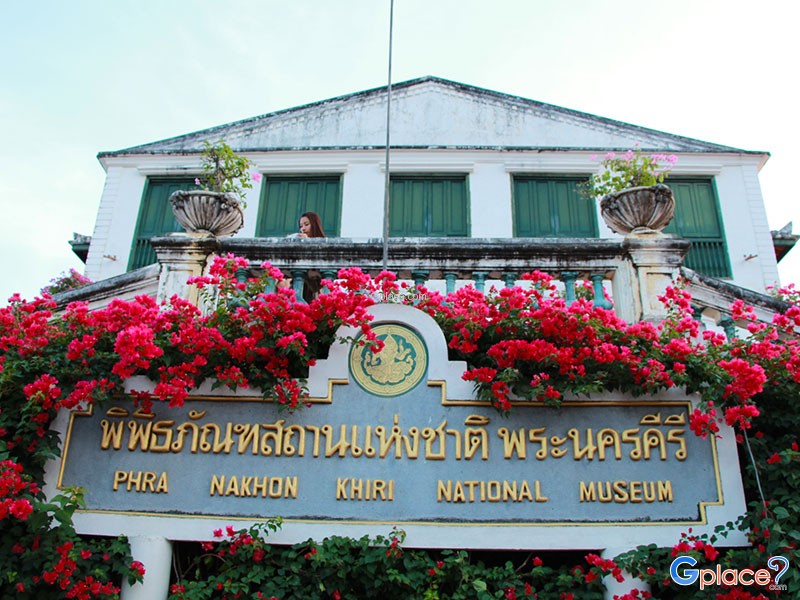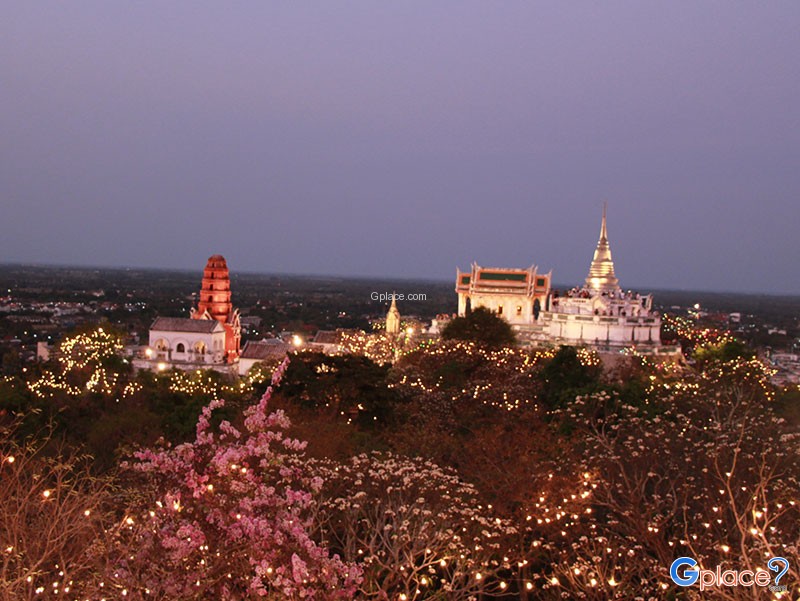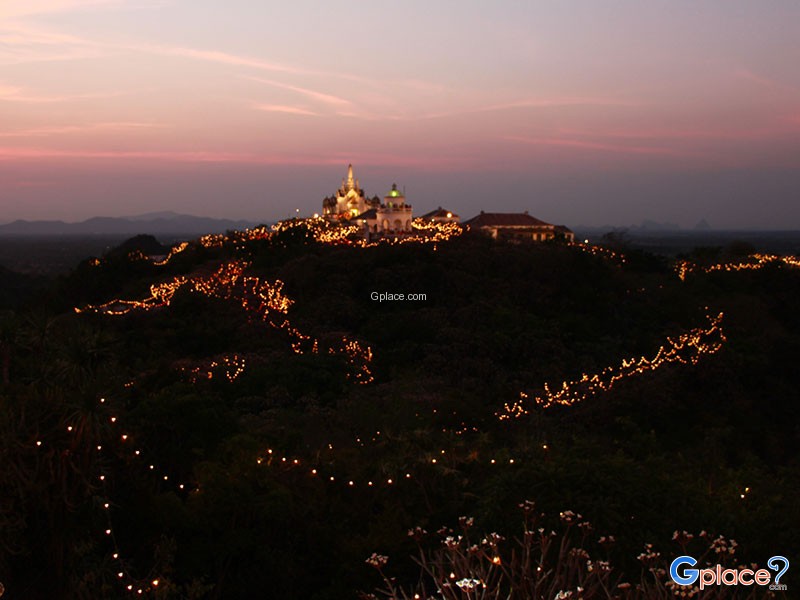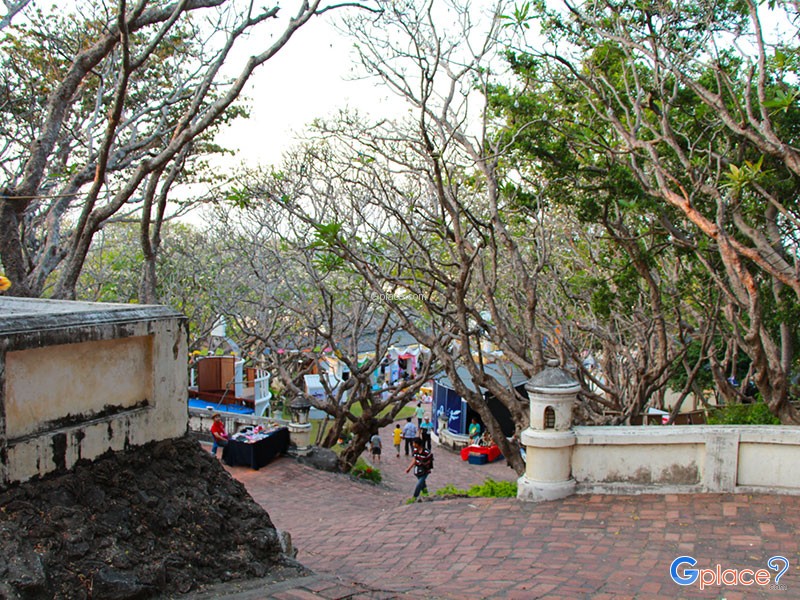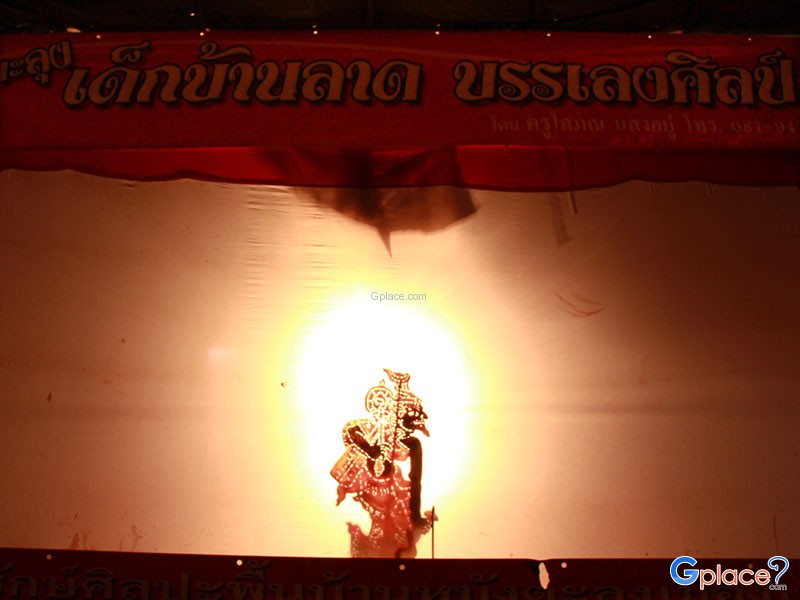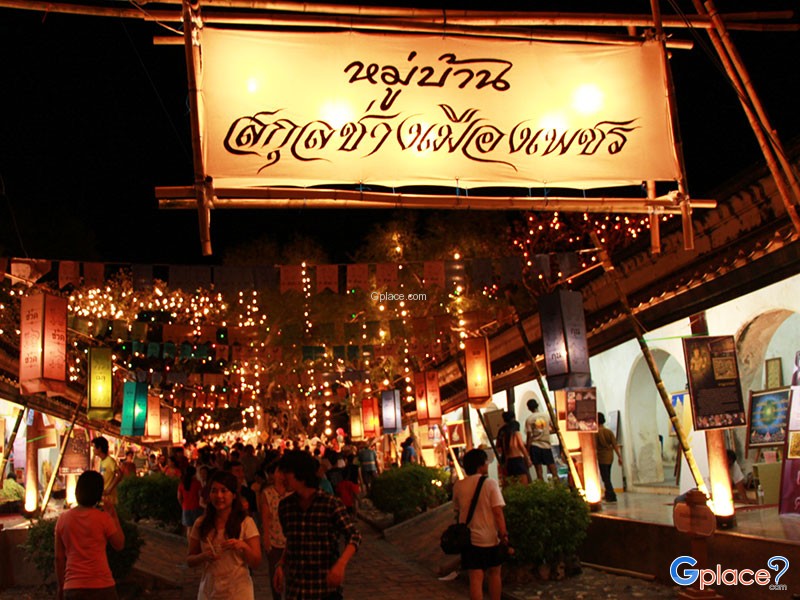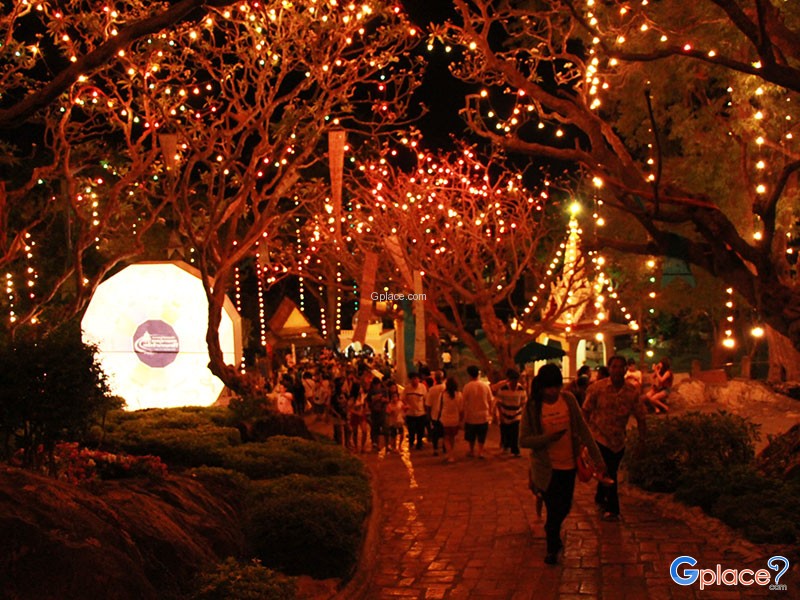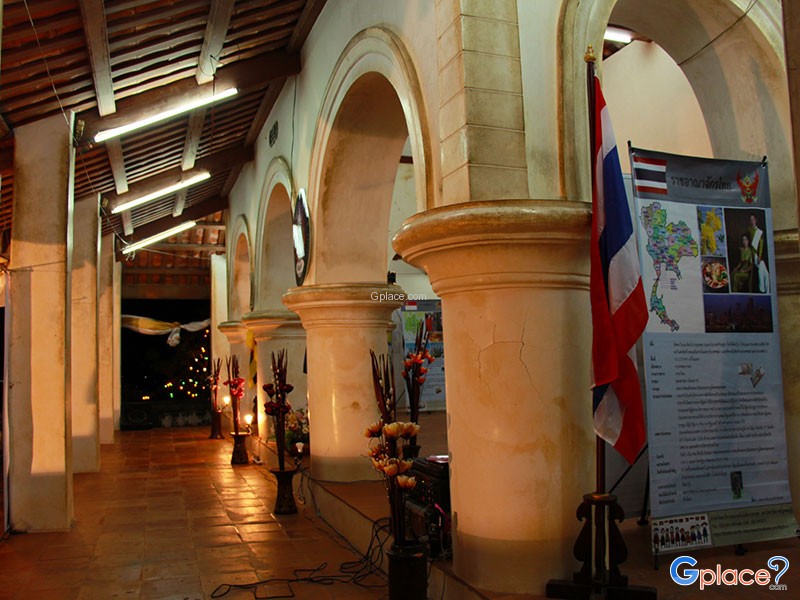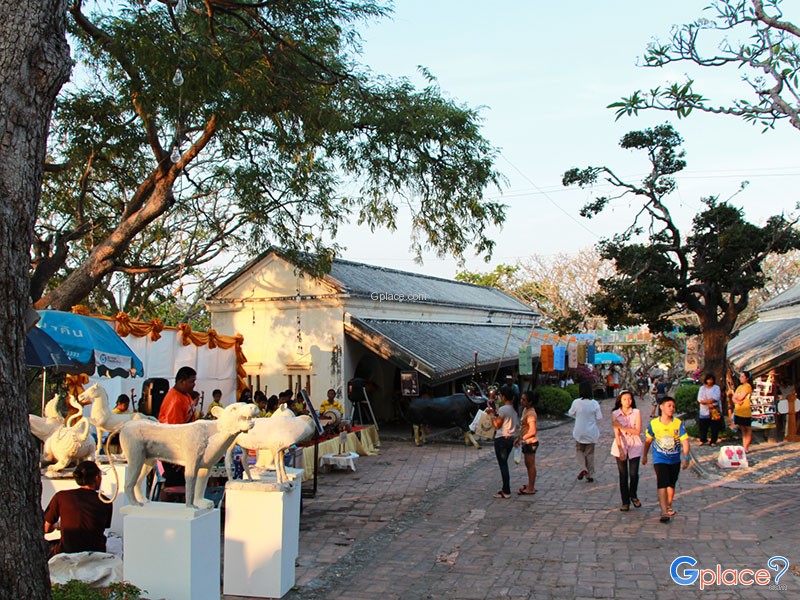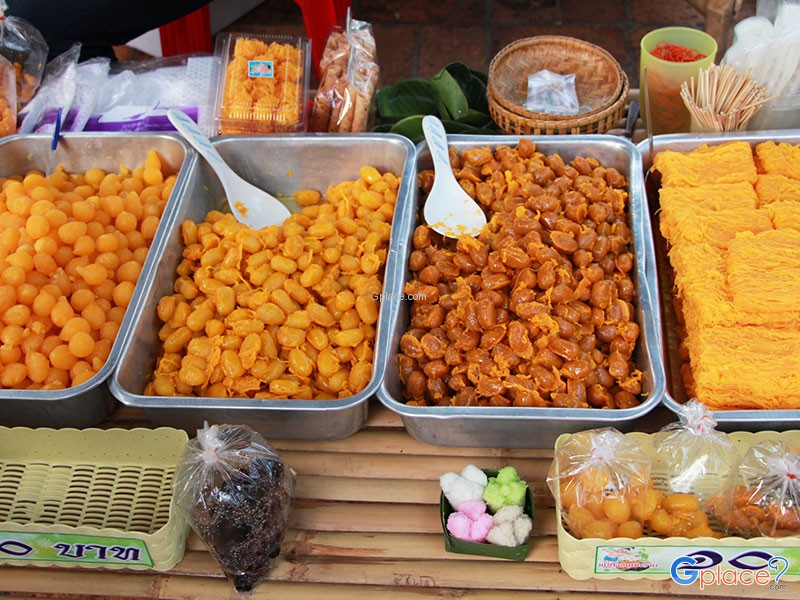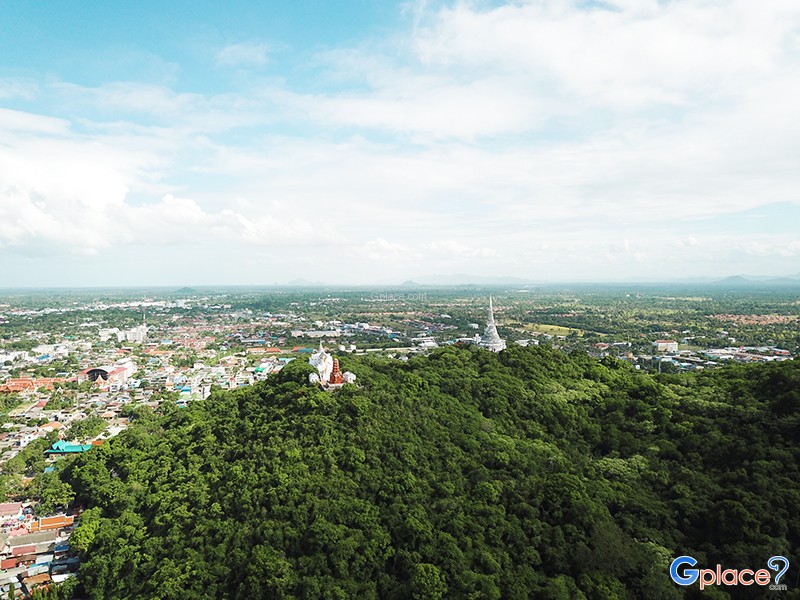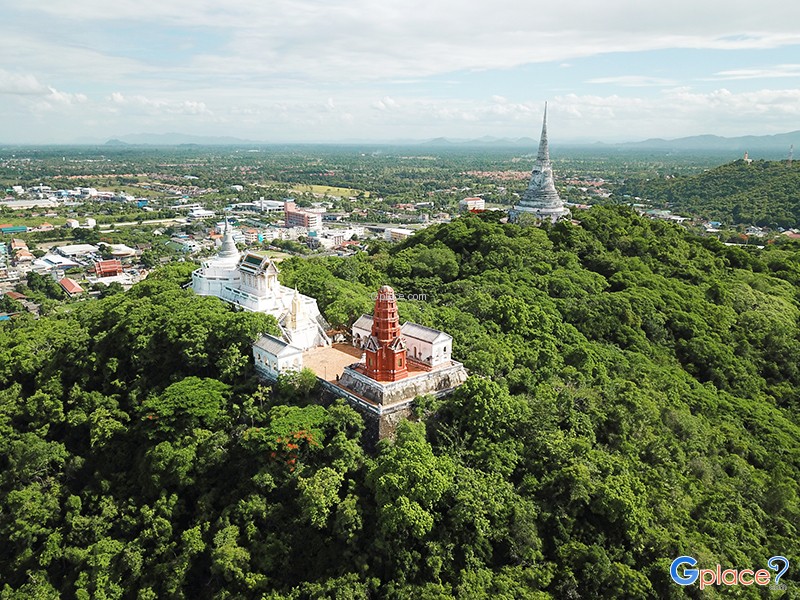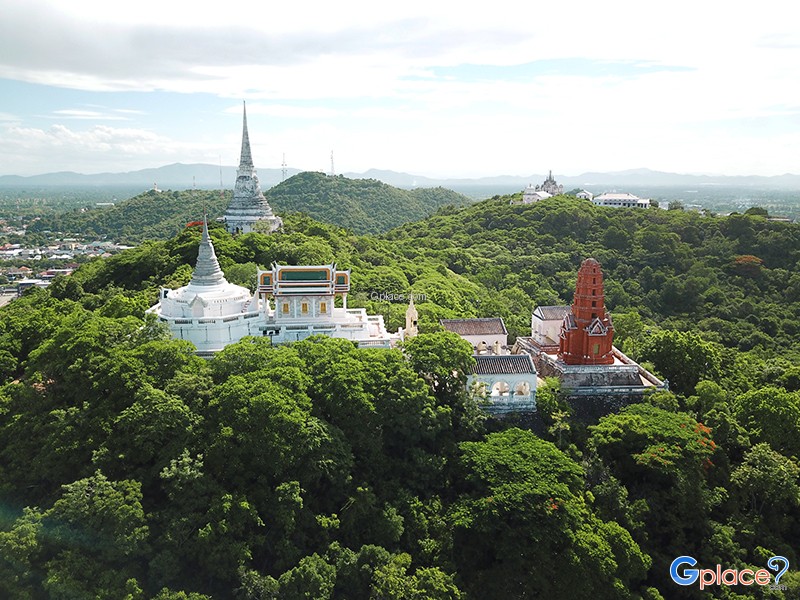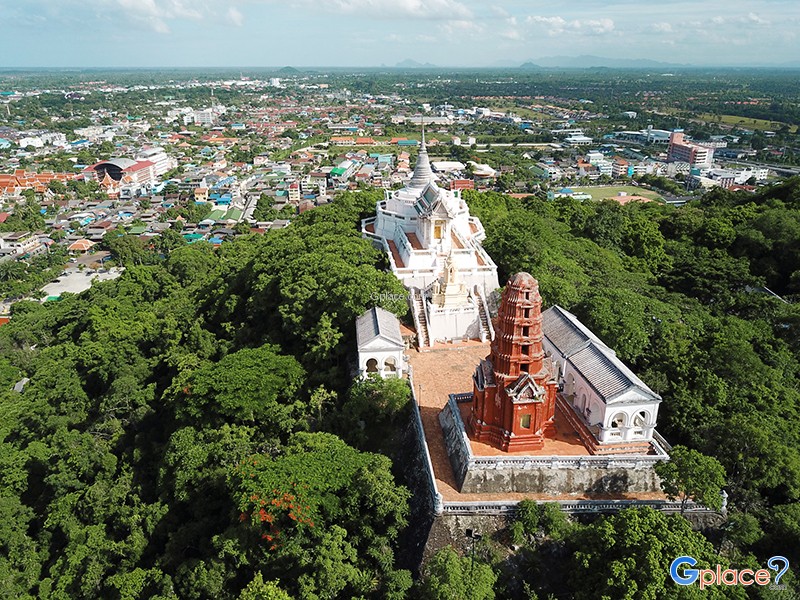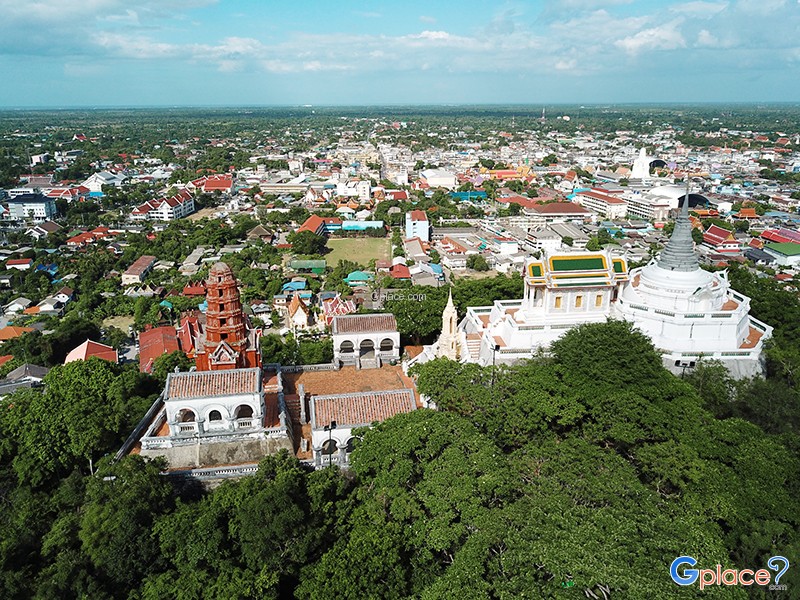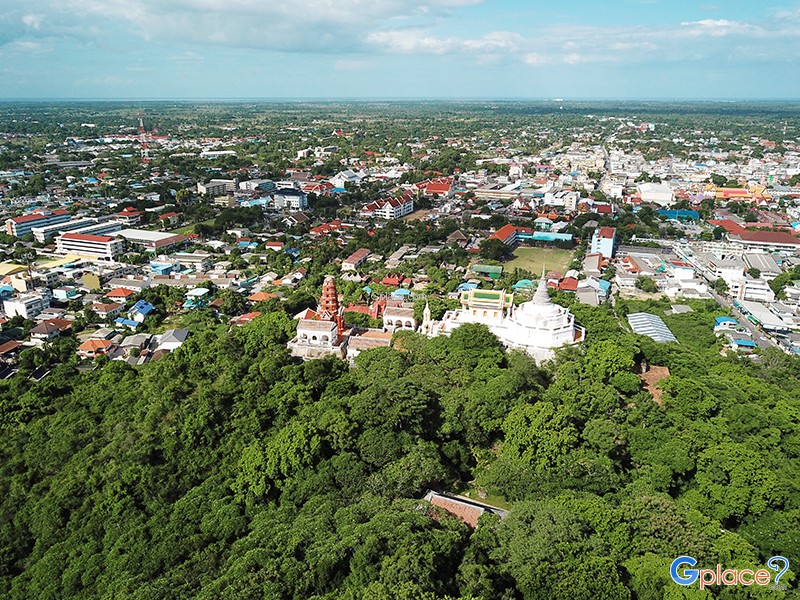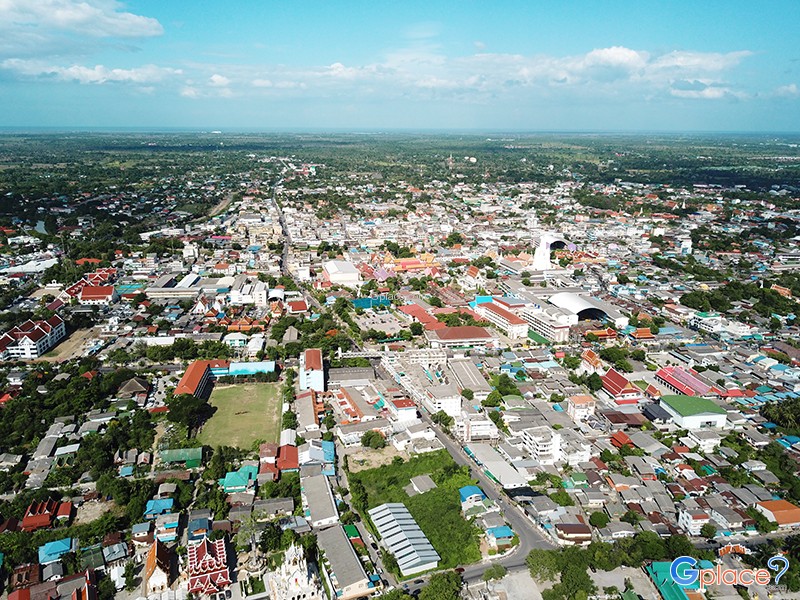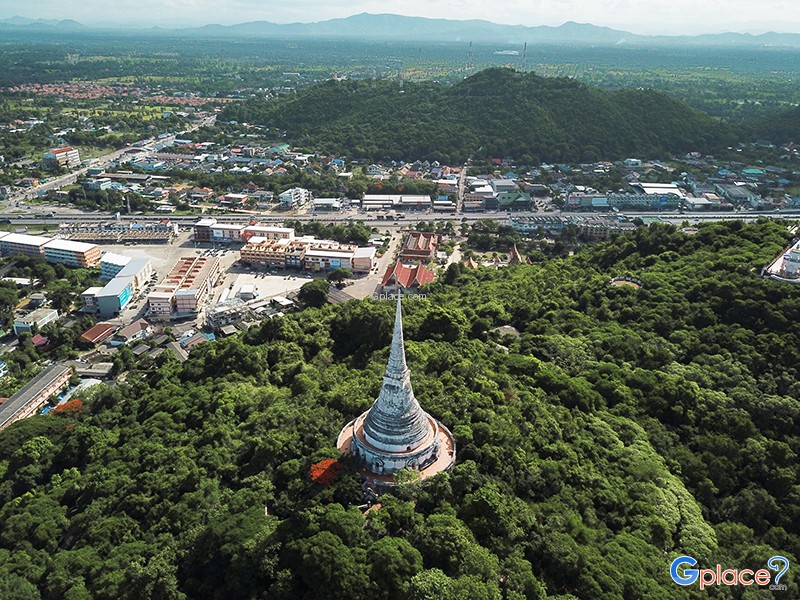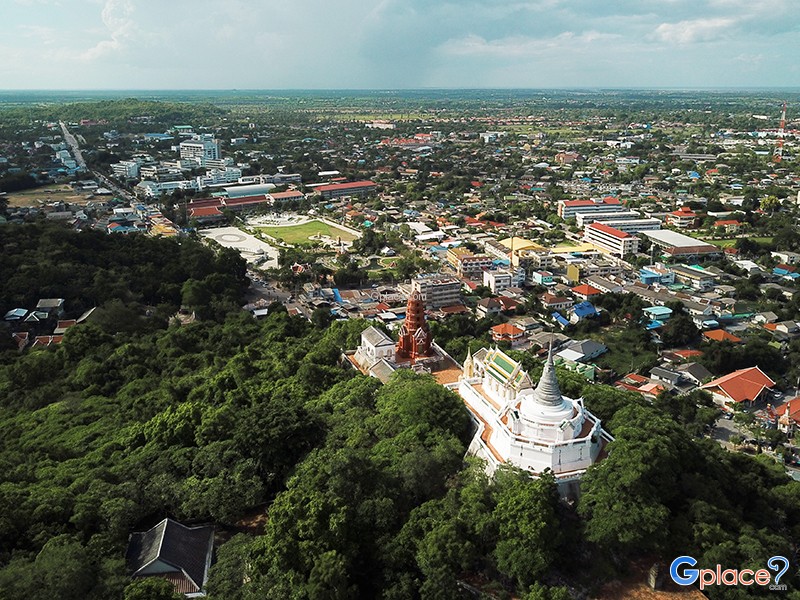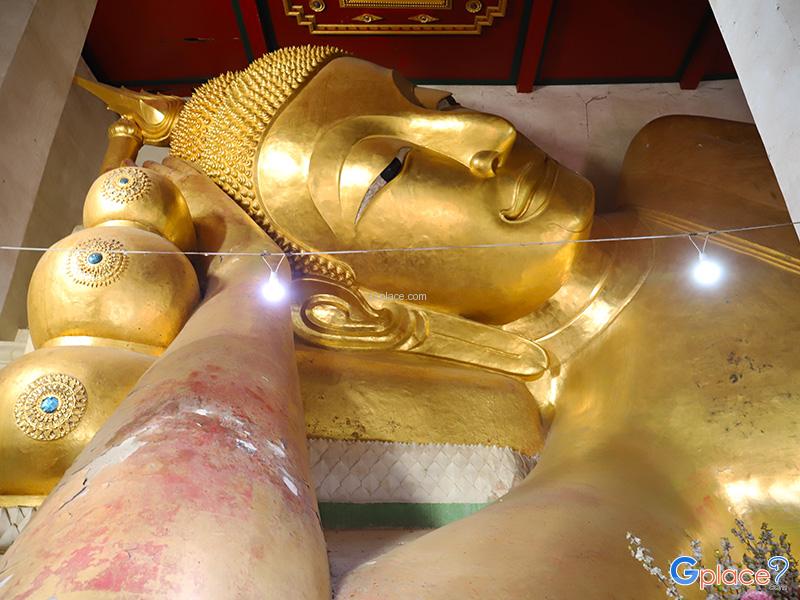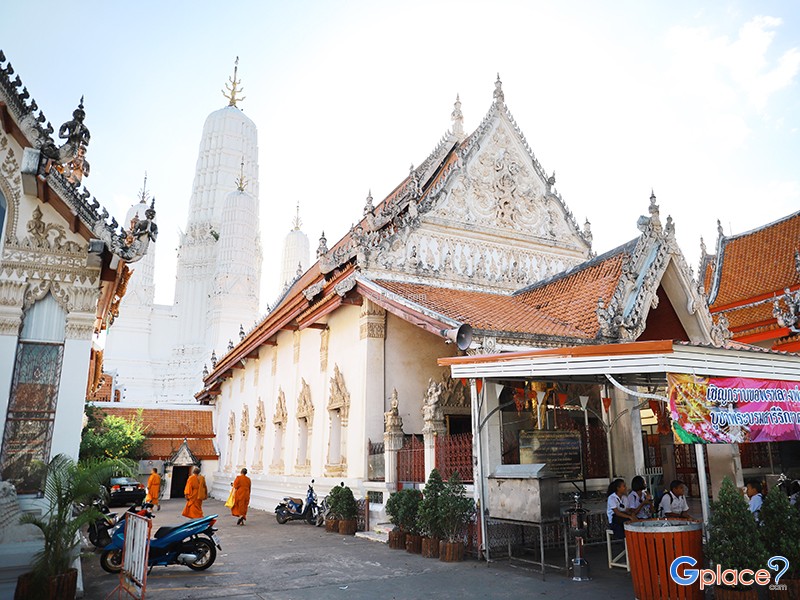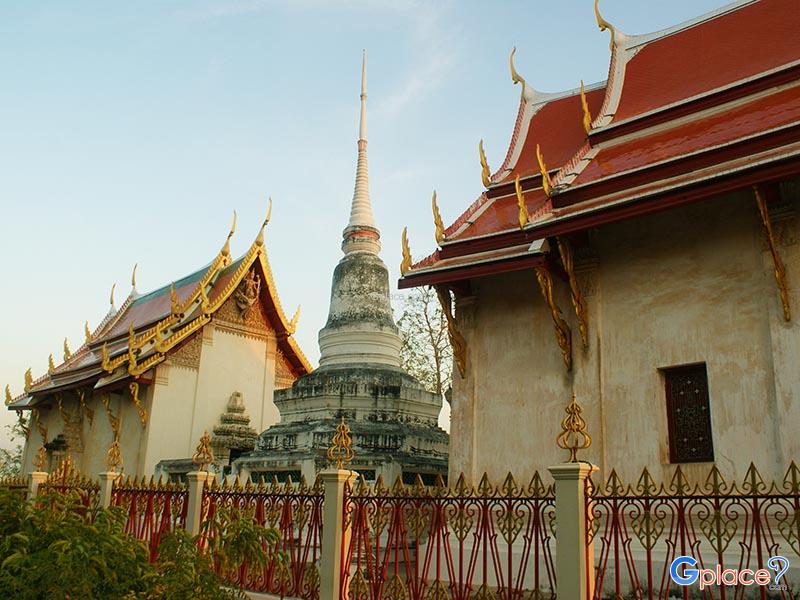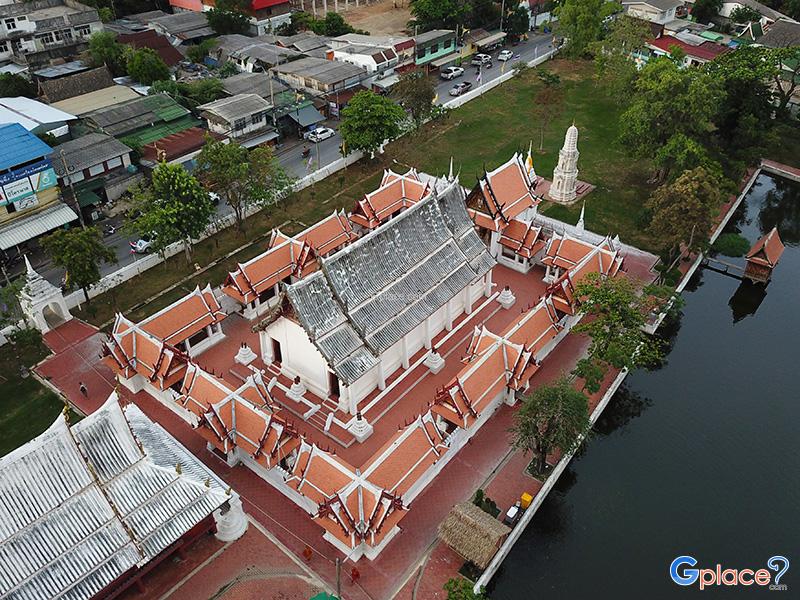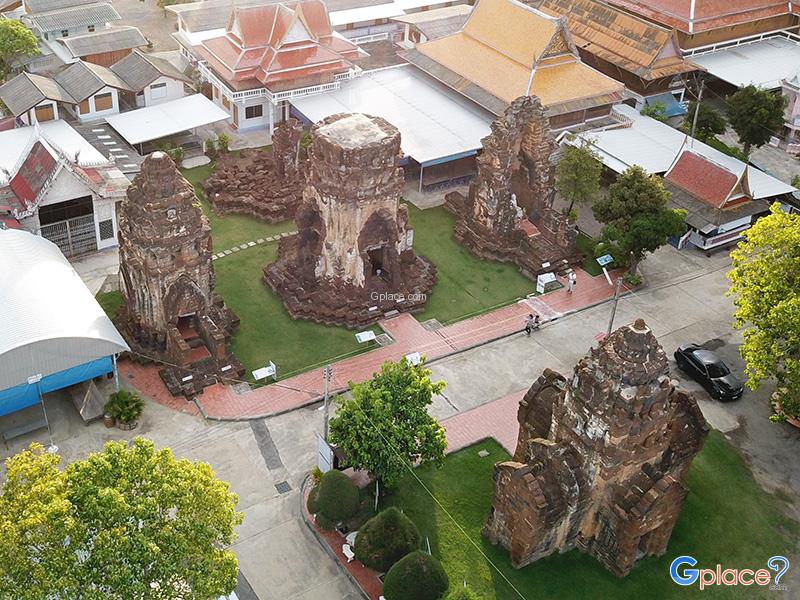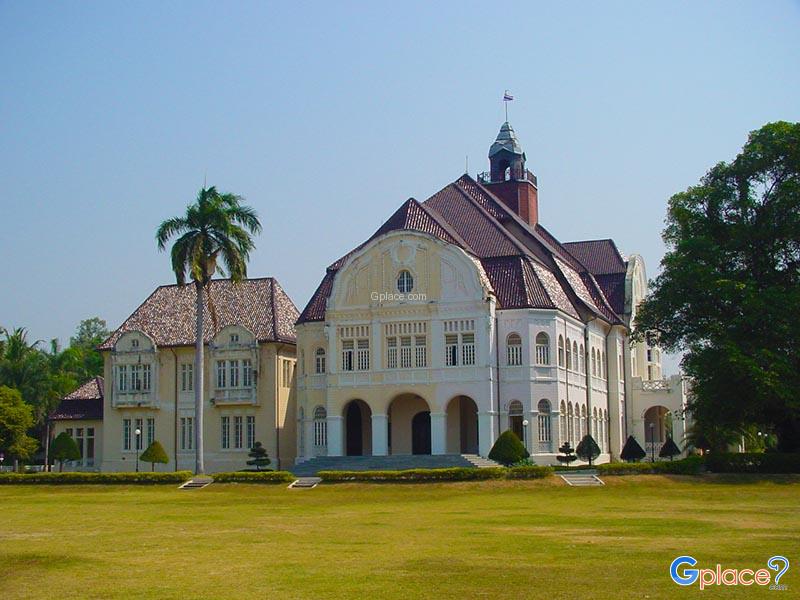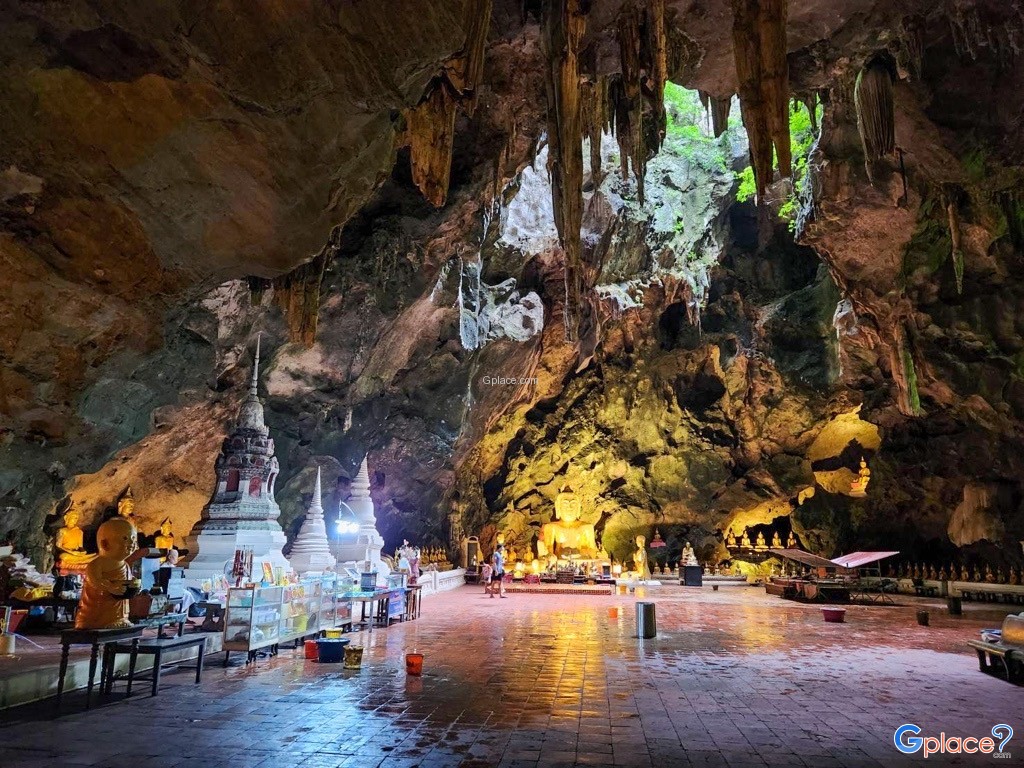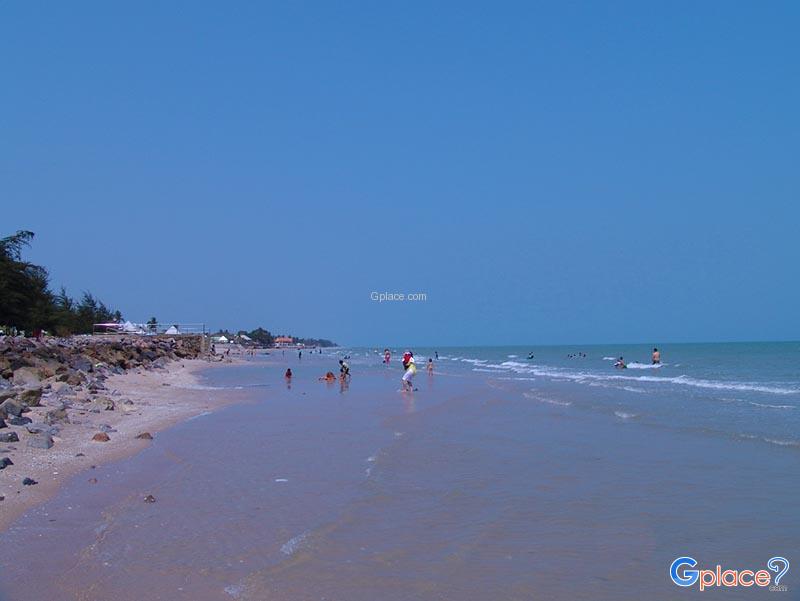“”
King Rama IV took Buddhist recluse at Tham Khao Yoi several times and stayed overnights at Wat Maha Samanaram at the foot of Khao Wang. After he took the throne, he had the first new palace built in Phetchaburi in 1859, on the top of Khao Khiri or Khao Maha Nakhon Khiri Palaceâ€. The hill was renamed “Khao Mahasawan†the great paradise but has been commonly called Khao Wang by the locals.
Khao Wang is a range of low hills with 3 big peaks, the highest is 95 metres. When the king Rama IV had the palace built on the western peak, he also had a new white stupa built to shelter the old chedi on the middle peak. The new chedi enshrining the relic was called Phra That Chomphet. He also bilt Wat Kaeo to the New palace’s temple on the eastern peak. The stucco pattern on the chapel’s gable was the Royal Crown, the emblem of King Rama IV. Behind the chapel, there is a marble stupa in greenish gray colour 4/12 wah tall, foundation 6 cubits wide. Its unique construction is being sculptured at Ko Sichang and brought to be erected here.
The buildings on Khao Wang were constructed in western style which had just come in fashion for the court at the time and also in Chinese style which had been fashionable since King Rama III. The palace is admirably unique monument of that period.
Khao Wang is a range of low hills with 3 big peaks, the highest is 95 metres. When the king Rama IV had the palace built on the western peak, he also had a new white stupa built to shelter the old chedi on the middle peak. The new chedi enshrining the relic was called Phra That Chomphet. He also bilt Wat Kaeo to the New palace’s temple on the eastern peak. The stucco pattern on the chapel’s gable was the Royal Crown, the emblem of King Rama IV. Behind the chapel, there is a marble stupa in greenish gray colour 4/12 wah tall, foundation 6 cubits wide. Its unique construction is being sculptured at Ko Sichang and brought to be erected here.
The buildings on Khao Wang were constructed in western style which had just come in fashion for the court at the time and also in Chinese style which had been fashionable since King Rama III. The palace is admirably unique monument of that period.
All reviews
(List 1 review)
Jirapong Thivawongsakal
รีวิวเมื่อ 31 มี.ค. 56
Phra Thinang Santhakarn Sathan
A large residential area. The throne which has two floors and a western structure molding. It is covered with Chinese tiles. The bedroom are upstairs on either side. The front part of lower floor was used to receiving guests. The balcony made on the front projection was the King viewing the theatric performance organized in the reign of King Rama IV. It was used valets of the King who was following him resting and used it for receiving the state guests in the past time.
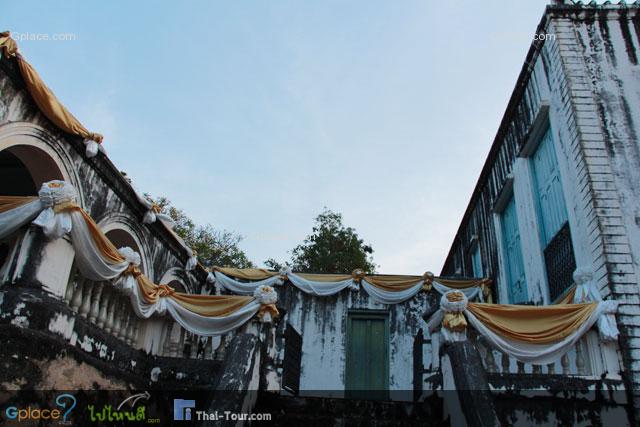
A large residential area. The throne which has two floors and a western structure molding. It is covered with Chinese tiles. The bedroom are upstairs on either side. The front part of lower floor was used to receiving guests. The balcony made on the front projection was the King viewing the theatric performance organized in the reign of King Rama IV. It was used valets of the King who was following him resting and used it for receiving the state guests in the past time.






